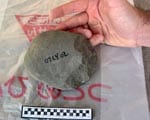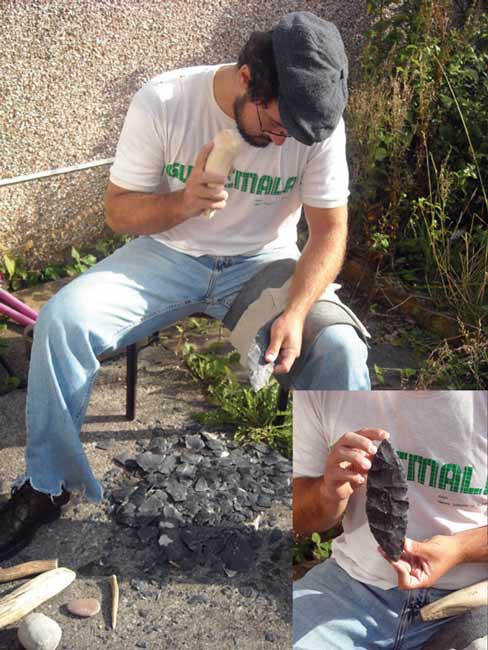440-year-old document sheds new light on native population decline under Spanish colonial rule
Analysis of a 440-year-old document that is a survey by a parish priest reveals new details about native population decline in the heart of the Inca Empire following Spanish conquest in the 16th century.
According to the new analysis, the native Andean population in the Yucay Valley of Peru showed a remarkable ability to bounce back in the short term from the disease, warfare, and famine that accompanied the initial Spanish invasion.
However, it was the repetition of such disasters generation after generation, along with overly rigid colonial administration, that dramatically reduced the population over the long term.
The research, by R. Alan Covey of Southern Methodist University in Dallas, Geoff Childs of Washington University in St. Louis, and Rebecca Kippen of the University of Melbourne, is published in the June issue of the journal Current Anthropology.
1569 survey by parish priest supplies clues to rare snapshot
The analysis in the article “Dynamics of Indigenous Demographic Fluctuations: Lessons from Sixteenth-Century Cusco, Peru” is based on an unusually detailed survey of the native population taken by the valley’s parish priest in 1569 and copied by a royal official during a 1571 visit.
Most surviving Spanish documents recording native population from this time included only a few age and sex categories, but this one counted individual men, women, and children in more than 800 households. As such, it provides researchers with a rare snapshot of a rural native population under colonial rule, and sheds light on the demographic pressures they faced.
Several aspects of the census data are indicative of the hardships the native population faced, Covey and his team report. First, there were many more women than men aged 45 to 64, likely due to the most intense fighting of the first years of the colonial period, which occurred 20 years earlier. Second, there were noticeable declines in the male population in the 25-29 age cohort, some of which appear to be linked to high mortality rates for men forced to work in coca plantations. Third, there was a particularly small cohort of both boys and girls aged 10 to 14. Young children are especially susceptible to famine and epidemic disease, so the small cohort likely indicates that low fertility and high mortality were prevalent around the time these children were born.
Despite the obvious hardships, the census also shows that the population had begun to bounce back. The cohorts aged 0-4 and 5-9 were surprisingly large.
Hard evidence shows indigenous population decline not universal
“This is a key finding,” Covey said. “The identification of recovery fertility is something that previous researchers have suggested but had not been able to identify with hard evidence. It challenges the long-held assumption that indigenous populations in the Americas experienced universal and consistent processes of decline after contact with Europeans.”
In fact, the data suggest that from 1568 to 1570 the women in the population were producing more than enough daughters to replace themselves. “If mortality and fertility conditions remained constant over time, then this population would have grown,” the researchers write.
Unfortunately, a cascade of events beginning in 1580s proved too much to overcome.
In the latter part of the decade, new waves of epidemic disease swept across the region. It was also around this time that the small 10-14 cohort documented in the census reached its peak child-bearing years. Even if the fertility rate of the women in that cohort had remained high, its small size meant that those women would produce fewer children than their immediate predecessors. Epidemics hitting at the same time would have decreased fertility for this group and increased mortality among the young, magnifying what already would have been a significant demographic dip.
Then around 1614, when the children born in the 1580s were at their peak fertility ages, another wave of disease hit, likely producing another magnified dip.
Population levels in the region declined by about 40 percent over the course of a generation, from the 1570s to around 1600. Similar declines were seen across the Americas around this time, but varied according to local social and ecological conditions, Covey says.
Boom-n-bust cycles exacerbated Spanish colonial insensitivity
The Spanish colonial administrators were generally unwilling to adjust their tax and labor demands along with these changes in demographics. And they probably were unaware of the changes until they affected working-age men, because women and children received limited attention in most early colonial population surveys.
“At times, macrodemographic cycles would have placed significant burdens on indigenous communities, which in turn probably contributed to conditions (poverty, malnutrition) favoring the spread of epidemic disease and enhancing its morbidity,” the researchers conclude.
“While indigenous populations showed considerable resilience in the face of imperial transformation, we hypothesize that the boom-and-bust cycles created by pandemics and exacerbated by insensitive administration drove the long-term trend of population decline observed in the Yucay Valley and probably in other parts of the Cusco region.” — University of Chicago Press Journals
SMU is a private university in Dallas where nearly 11,000 students benefit from the national opportunities and international reach of SMU’s seven degree-granting schools. For more information see www.smu.edu.
SMU has an uplink facility located on campus for live TV, radio, or online interviews. To speak with Dr. Alan Covey or to book an SMU guest in the studio, call SMU News & Communications at 214-768-7650.










 Human diabetes has new research tool: Overfed fruit flies that develop insulin resistance
Human diabetes has new research tool: Overfed fruit flies that develop insulin resistance






 Middle school boys who are reluctant readers value reading more after using e-readers
Middle school boys who are reluctant readers value reading more after using e-readers